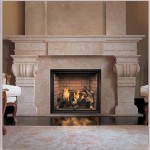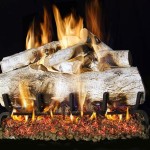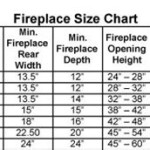Enhancing Fireplace Efficiency: The Role of a Fireplace Grate with Blower
A fireplace provides aesthetic appeal and supplemental heating to a home. However, a traditional fireplace can be inefficient, with a significant amount of heat escaping through the chimney. One method of improving a fireplace's heating efficiency is the integration of a fireplace grate equipped with a blower. This technology aims to circulate the heat generated by the fire into the room more effectively. This article will delve into the mechanics, benefits, selection criteria, and maintenance considerations surrounding fireplace grates with blowers.
Operational Mechanics of Fireplace Grates with Blowers
The core function of a fireplace grate with blower lies in its ability to enhance heat convection. Traditional fireplace grates elevate firewood, facilitating airflow beneath the logs, which promotes more complete combustion. The addition of a blower system further complements this process. The blower, typically an electric fan integrated into the grate’s structure, draws cool air from the room, passes it through hollow tubes within the grate, and expels heated air back into the living space.
The heat transfer process is significantly improved as the cooler air is warmed by the intense heat radiating from the fire. This heated air is then forcefully circulated back into the room, preventing the warm air from simply rising to the ceiling and escaping up the chimney. The blower is usually equipped with a variable speed control, allowing users to adjust the airflow and heat output based on their specific needs and the intensity of the fire. Some models feature thermostatic controls that automatically adjust the blower speed based on the firebox temperature, ensuring optimal efficiency and preventing overheating.
The design of the grate itself contributes to the overall efficiency. Grates are often constructed from heavy-duty steel or cast iron, materials known for their excellent heat retention. The tubing system within the grate is strategically designed to maximize surface area contact with the heat source, ensuring effective heat absorption and transfer to the air flowing through the tubes.
Benefits of Using a Fireplace Grate with Blower
The primary advantage of using a fireplace grate with blower is enhanced heating efficiency. By circulating heated air into the room, these grates can significantly reduce heat loss through the chimney, making the fireplace a more effective supplemental heating source. This can translate into lower heating bills and a more comfortable living environment, especially during colder months.
Improved air circulation also contributes to a more even distribution of heat throughout the room. Without a blower, heat tends to concentrate near the fireplace, leaving other areas of the room cooler. The forced air circulation helps to eliminate these temperature disparities, creating a more consistent and comfortable indoor climate.
Many users appreciate the convenience and control offered by these systems. The variable speed control allows for precise adjustment of the heat output, catering to individual preferences and the changing needs of the household. Some models, as previously mentioned, offer thermostatic control, further automating the process and ensuring optimal performance. The use of a grate also contributes to a cleaner burning fire, as it elevates the logs, promoting better airflow and more complete combustion, which reduces smoke and creosote buildup in the chimney.
Furthermore, the use of a well-designed fireplace grate can extend the life of the fireplace itself. By providing a stable and elevated platform for the firewood, the grate protects the firebox floor from direct contact with the intense heat, reducing the risk of cracking or damage over time.
Considerations When Selecting a Fireplace Grate with Blower
Choosing the appropriate fireplace grate with blower requires careful consideration of several factors. The size of the fireplace opening is paramount. The grate must fit comfortably within the firebox, allowing for adequate clearance around the sides and top to ensure proper airflow and prevent overheating. Accurate measurements of the firebox width, depth, and height are essential to ensure a proper fit.
The BTU (British Thermal Unit) output of the blower should also be considered. This rating indicates the amount of heat the blower is capable of circulating. A larger room will generally require a blower with a higher BTU rating to effectively heat the space. It is important to assess the room size and insulation levels to determine the appropriate BTU output for optimal performance.
The construction materials and design of the grate are also important factors. Heavy-duty steel or cast iron are preferred materials for their durability and heat retention properties. The design of the tubing system within the grate should be optimized for maximum surface area contact with the heat source. Some grates feature thicker tubing or multiple rows of tubes to enhance heat transfer efficiency.
The noise level of the blower is another consideration, especially for those sensitive to noise. Some blowers are quieter than others, and it is advisable to read reviews or listen to the blower in operation before making a purchase. Variable speed controls can also help to minimize noise levels by allowing the blower to operate at lower speeds when less heat is needed.
Finally, consider the electrical requirements of the blower. Most models require a standard 120V electrical outlet for operation. Ensure that there is a conveniently located outlet near the fireplace, or be prepared to use an extension cord. Some models may also offer features such as surge protection or automatic shut-off in case of overheating, which can enhance safety and prolong the life of the blower.
Maintenance and Safety Considerations
Proper maintenance is crucial for ensuring the safe and efficient operation of a fireplace grate with blower. Regular cleaning is essential to remove ash and debris that can accumulate within the grate and blower system. This buildup can impede airflow and reduce heating efficiency. Use a brush or vacuum to clean the grate and blower regularly, especially after heavy use.
Inspect the blower motor and fan blades periodically for any signs of damage or wear. Dust and debris can accumulate on the fan blades, reducing their efficiency and potentially causing the motor to overheat. Clean the fan blades with a soft brush or cloth. If the motor is making unusual noises or is not running smoothly, it may need to be lubricated or replaced.
Ensure that the electrical cord and connections are in good condition. Check for any signs of damage, such as frayed wires or loose connections. Replace the cord if it is damaged. Avoid overloading the electrical circuit by plugging other high-power appliances into the same outlet. Consider using a surge protector to protect the blower from power surges.
It is also essential to follow all safety precautions when operating a fireplace with a blower. Never leave a fire unattended. Keep flammable materials, such as curtains, furniture, and paper, away from the fireplace. Ensure that the chimney is regularly inspected and cleaned to prevent creosote buildup, which can pose a fire hazard. Install and maintain smoke detectors and carbon monoxide detectors in the home to provide early warning of potential hazards.
Always follow the manufacturer's instructions for operating and maintaining the fireplace grate with blower. These instructions will provide specific guidance on cleaning, lubrication, and other maintenance procedures. Failure to follow these instructions can void the warranty and potentially damage the equipment.
Periodically inspect the firebox itself for any signs of damage, such as cracks or loose bricks. Repair any damage promptly to prevent further deterioration and ensure the structural integrity of the fireplace. Consider having the fireplace professionally inspected and cleaned annually to ensure that it is operating safely and efficiently.
In conclusion, a fireplace grate with blower represents a valuable investment for homeowners seeking to improve the heating efficiency of their fireplace. By understanding the operational mechanics, benefits, selection criteria, and maintenance considerations, individuals can make informed decisions and enjoy a warmer, more comfortable, and safer home environment.

Choose A Fireplace Grate Heater From The 3 Top Ing For 2024

Grate Heater Wikipedia
Fireplace Heater 5 Tube W Blower

Spitfire Fireplace Heater With Blower Unit Grate

Medium Double Grate Hastyheat

Grate Heater With Masonry Fireplace Doors Customized

Tube Fireplace Grate Heater For Zc Fireplaces

5 Tube Grate Heater Wood Burning Fireplaces

Spitfire Tube Fireplace Heaters Heater Blower Heating And Plumbing

Tiny Stainless Grate Fanless Hastyheat
Related Posts








